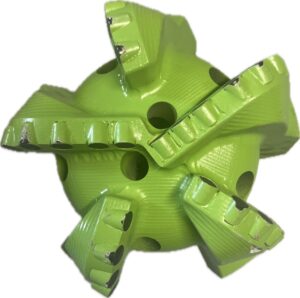Matrix Body vs. Steel Body PDC Drill Bits
In drilling operations, operators have many decisions to make when choosing a PDC drill bit:
- Should I choose a matrix-body or steel-body PDC?
- What cutting structure do I need?
- What IADC is the PDC drill bit?
- How do you optimize drilling operations for a PDC drill bit?
This article discusses the difference between matrix-body and steel-body PDC (polycrystalline diamond compact) drill bits. Let’s explore the similarities and differences between these two types to help you make informed decisions for your drilling projects.
PDC Drill Bit Design
Matrix Body PDC Drill Bits:
- Constructed from tungsten carbide material for enhanced wear resistance.
- Typically feature a higher cutter count, providing improved durability in abrasive environments.
- Their robust design suits applications with high fluid volume or abrasive conditions.
Steel Body PDC Drill Bits:
- Crafted from high alloy steel, offering durability and repairability.
- Often manufactured with higher blade stand-off and cutter exposure for increased Rate of Penetration (ROP).
- Ideal for multiple runs and cost-effective for various drilling scenarios.
PDC Drill Bit Durability
Matrix Body PDC Drill Bits:
- Excel in wear resistance, making them suitable for challenging drilling environments.
- Offer prolonged lifespan and multiple-bit runs, especially in high fluid volume or high sand conditions.
- Suited for extended drilling operations where durability is paramount.
Steel Body PDC Drill Bits:
- Known for their durability and repairability, allowing for cost-effective maintenance and re-use.
- Withstand higher impact than matrix body bits, making them suitable for demanding drilling conditions.
- Ideal for applications requiring robust performance and longevity.
PDC Drill Bit Repairability
Matrix Body PDC Drill Bits:
- Generally, they are not repairable due to their construction using tungsten carbide material.
- Replacement of worn or damaged cutters is the primary maintenance approach.
- May require more frequent replacements compared to steel body bits.
Steel Body PDC Drill Bits:
- Repairable due to their construction from high alloy steel.
- Maintenance typically involves cutter replacement, refurbishment, or reconditioning.
- Offer cost-effective solutions for extending bit lifespan and optimizing performance.
PDC Drill Bit Performance
Matrix Body PDC Drill Bits:
- Provide excellent performance in abrasive environments and high fluid volume conditions.
- Suitable for achieving high penetration rates and efficient drilling progress.
- Ideal for applications where wear resistance and longevity are critical.
Steel Body PDC Drill Bits:
- Deliver robust performance in challenging drilling conditions, including high-impact environments.
- Known for their ability to maintain ROP and drilling efficiency over multiple runs.
- Suited for applications requiring durability, repairability, and consistent performance.
Conclusion: Choosing the Right PDC Drill Bit
In summary, the choice between matrix-body and steel-body PDC drill bits depends on the specific drilling conditions, requirements, and budget considerations. While matrix-body bits offer superior wear resistance and durability in abrasive environments, steel-body bits provide repairability and cost-effectiveness for extended use. By understanding the distinctions outlined above, drilling professionals can select the most suitable PDC drill bit for their projects, ensuring optimal performance and efficiency.


